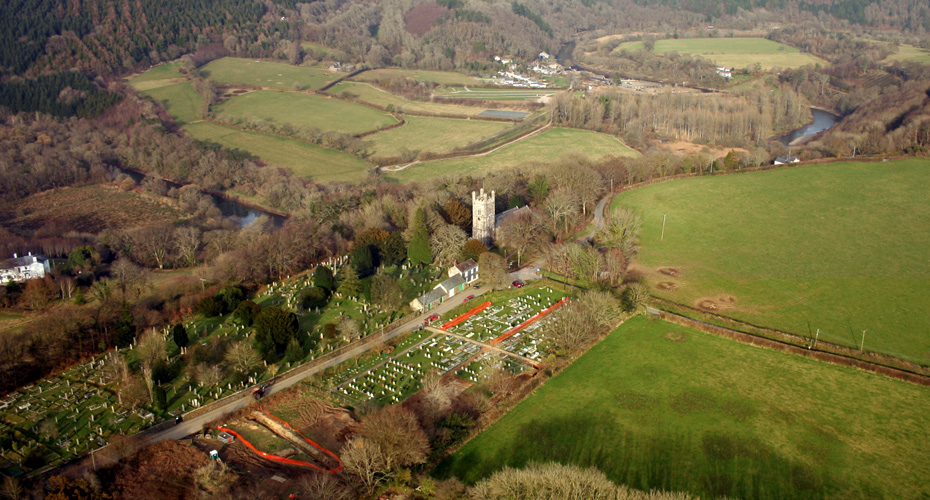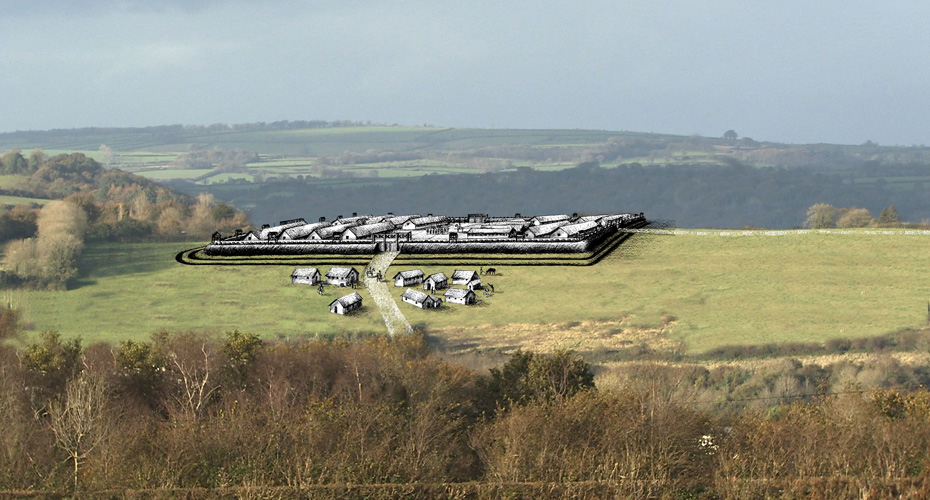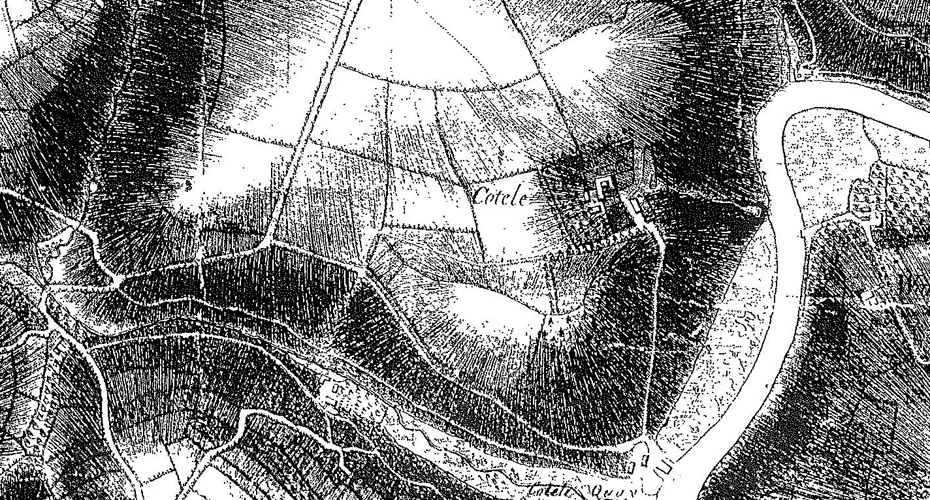Calstock Archaeological Dig 2019.
Calstock
The University's interest in Calstock began in 2006, during the search for a medieval administrative centre for the Crown silver mines at Bere Ferrers, which documents tell us was based somewhere in the parish during the early part of the fourtenth century. Whilst that site remains elusive, our survey work identified a large Roman fort on top of the hill where today St Andrew's church stands proud in glorious isolation (almost). Four seasons of excavation between 2008 and 2011 confirmed that the fort was occupied between c. AD 50/55 and 80, by an auxiliary cohort of up to 500 men. Those excavations also identified a Roman camp, constructed before the fort as part of initial military campaigning in the South West, and a much larger defensive enclosure that may have Iron Age origins. The excavations also tell us why the church stands well outside the present-day village - the village has moved! Archaeological evidence shows that between the eighth and thirteenth centuries a settlement flourished immediately adjacent to the church, and probably contracted as the riverside settlement began to flourish.
The Understanding Landscapes project provides opportunities to become involved in investigating this rich historic landscape, which also includes the National Trust's late medieval manorial centre at Cotehele:



